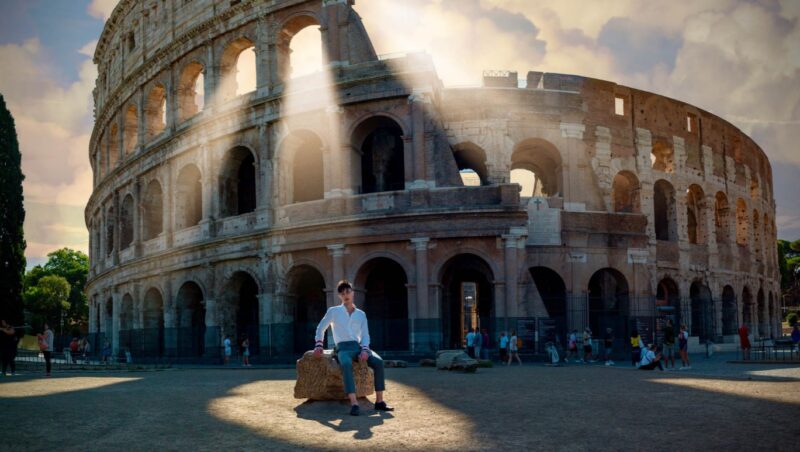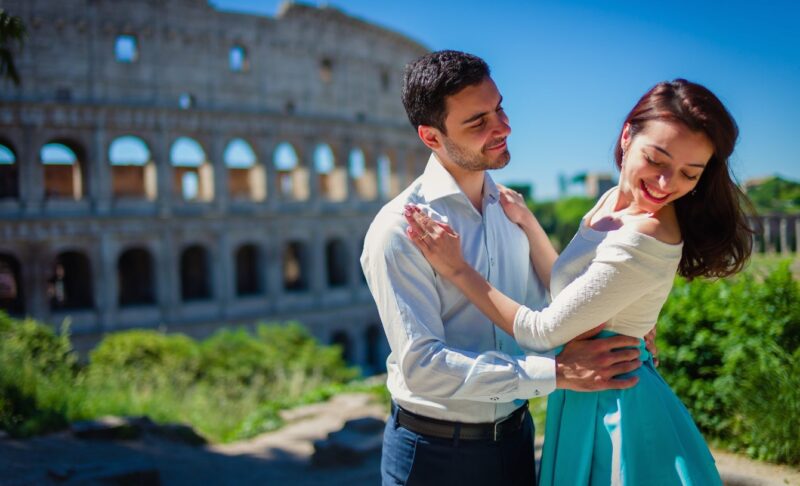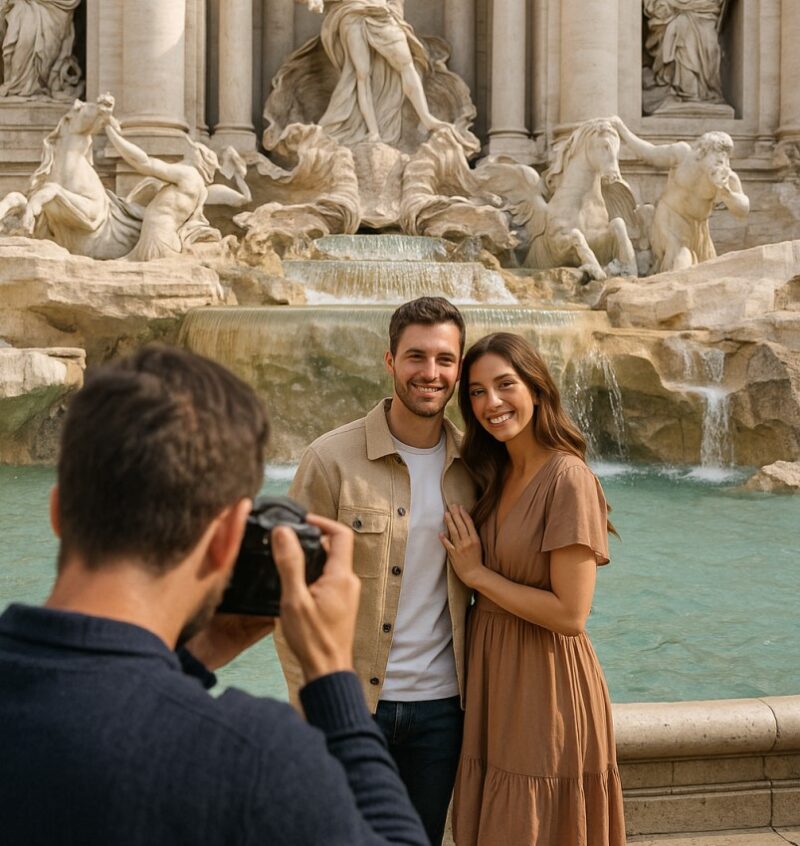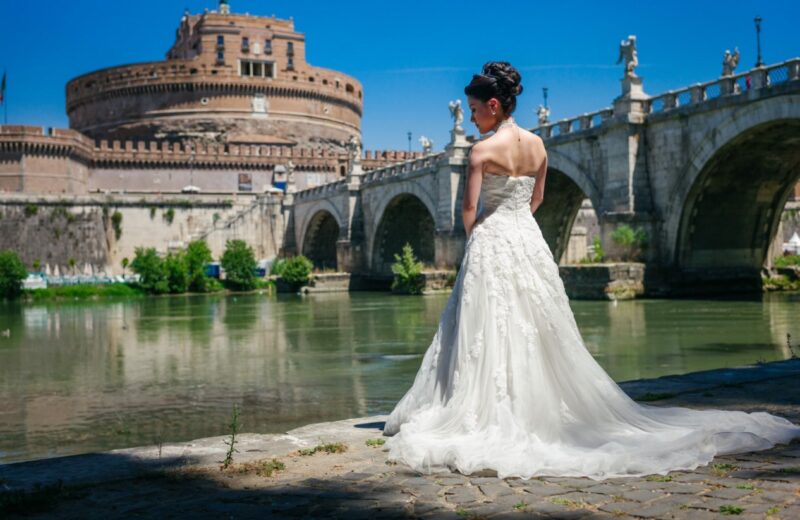As a photographer in Rome, you’re presented with a unique opportunity to capture the essence of one of the most picturesque cities in the world. Rome’s iconic landmarks, charming streets, and timeless beauty are enhanced by the way natural light plays across the architecture and landscapes. If you’re aiming to create stunning photographs, understanding how to harness natural light will make all the difference.
In this article, we’ll share valuable tips and insights from a professional Mike Kire, photographer in Rome who has spent years working in Rome’s changing light conditions. Whether you’re a beginner or a seasoned pro, this guide will help you master working with natural light in the Eternal City, ensuring your photos are as vibrant and captivating as the city itself.
The Power of Natural Light in Rome

When photographing in Rome, the role of natural light cannot be overstated. The city’s diverse architecture, combined with the Mediterranean climate, creates a beautiful interplay of light and shadow. The way sunlight illuminates ancient ruins, glistens off fountains, or bathes narrow alleyways in a warm glow is something every photographer dreams of capturing.
Why It Matters
Natural light is often preferred over artificial lighting because it creates softer shadows, more vivid colors, and a sense of realism in photographs. Unlike artificial lighting, which can sometimes feel harsh or overly staged, it brings an organic feel to your images. It works in harmony with the surroundings, allowing you to capture the atmosphere of the scene authentically.
In Rome, the natural light changes throughout the day and varies depending on the season. This variability offers you endless possibilities to experiment with different lighting effects. Understanding how to use this ever-changing resource can take your photography to new heights.
Best Times to Shoot in Rome
The time of day plays a crucial role in the quality of light you’ll have, and in a city like Rome, this becomes especially important for getting the most out of the light.
Golden Hour and Blue Hour
The golden hour—just after sunrise and just before sunset—is one of the best times to capture warm, flattering light. The sunlight during these periods is soft, diffused, and golden in hue, making everything from ancient columns to modern-day cafes look enchanting.
The blue hour, which occurs shortly after sunset or just before sunrise, is another magical time for photographers. During this period, the scene takes on cooler tones, offering a different ambiance compared to the warmth of the golden hour.
Both golden and blue hours provide a unique opportunity to experiment with shadows, reflections, and colors, resulting in dramatic and atmospheric images.
Midday Sun

While midday sunlight can sometimes be harsh, it’s not always something you should avoid. In fact, this is a great time for certain types of photography, especially in areas where there’s a lot of shade or architectural features that cast interesting shadows. For instance, when photographing the Pantheon or the Colosseum, the midday can accentuate the textures of the stone and create compelling contrasts between light and shadow.
However, if you’re shooting outdoors without much shade, be mindful of overexposure. Using reflectors or diffusers can help soften the harsh light and create more flattering images.
Leveraging the Unique Roman Architecture
Rome is filled with stunning architecture that provides a perfect canvas for natural light photography. From baroque churches to ancient ruins, the interplay of sun rays and shadow can be used to create dynamic compositions.
Shadows and Reflections
Rome’s narrow streets and historical buildings provide numerous opportunities to play with shadows and reflections. The juxtaposition of light and dark can add depth to your photos and create interesting patterns. A photograph of a cathedral bathed in sunlight, with its shadow stretching across the cobblestones, can tell a compelling story of history, space, and light.
Reflections are also a useful tool in Rome, particularly when photographing fountains or the Tiber River. The reflective surfaces allow you to capture a second version of the scene, often providing a symmetrical or artistic feel to your images.
Using Doorways and Windows for Framing
Roman buildings often feature beautiful doorways and windows that can be used as natural frames for your subjects. The soft light streaming through these architectural features can create a visually pleasing contrast, allowing you to direct the viewer’s eye to the main subject while providing a rich backdrop of the city’s details.
Take advantage of these natural frames by positioning your subjects in ways that allow the light to play across their features. Whether you’re photographing a couple in front of the Trevi Fountain or a street artist painting in Trastevere, using these elements for framing will elevate your compositions.

Tools and Techniques To Use
While natural light can work wonders, sometimes you’ll need a little help in controlling it. Here are some tools and techniques that professional photographers use to make the most of Rome’s beauty
Reflectors
A reflector is a versatile tool that can help you bounce natural light onto your subject. This is particularly useful in the midday sun, where harsh shadows might appear on your subject’s face. By using a reflector, you can soften these shadows and create a more balanced exposure. It’s an easy tool to carry and can be used in almost any situation.
Diffusers
A diffuser softens the light that hits your subject, making it perfect for situations where the brightness is too direct or harsh. In Rome, many locations, such as the Roman Forum or Piazza Navona, are wide open to the sky, meaning sunlight can be very direct at certain times of the day. A diffuser will soften the illumination and create a gentle, flattering effect on your subject.
Filters and Lenses
Using filters can help you control the intensity of light entering your lens, especially in bright conditions. A polarizing filter can reduce reflections on water or glass surfaces and deepen the colors of the sky and buildings, making your images more vivid. Additionally, using lenses with a wide aperture can help you create beautiful bokeh effects, adding a professional touch to your photos.
The Impact of Weather
Weather conditions play an important role in the quality of natural light in Rome. While sunny days often provide bright, direct light, overcast days offer a different type of atmosphere. On cloudy days, the sky acts as a giant diffuser, creating soft, even light that is ideal for portrait photography. This type of light reduces harsh shadows and helps bring out fine details in your subjects.
Rainy days can also provide unique opportunities for photographers in Rome. Wet streets reflect light, creating a beautiful shimmer that adds a touch of magic to your shots. Don’t be afraid to take your camera out on these days—just make sure to protect your gear with a rain cover!
Location Spotlight: Best Spots for Natural Light Photography in Rome

Rome offers a variety of locations where natural light truly shines. Here are some of the best places in the city for working with light:
- The Colosseum – The interplay of shadows and light here, especially during the early morning or late afternoon, creates a dramatic atmosphere.
- The Roman Forum – The ancient ruins bathe in warm light during golden hour, offering fantastic photo opportunities.
- Piazza Navona – The fountains and baroque architecture here shine in the soft morning brightness, creating a picturesque setting for photos.
- Trastevere – The narrow streets and charming alleyways in this area offer unique light and shadow play throughout the day.
- Vatican Gardens – The beautifully manicured gardens provide serene light conditions for capturing peaceful, reflective moments.
Mastering natural light in Rome requires patience, experimentation, and a deep understanding of how light interacts with your subjects. With the tips shared in this guide, you’ll be able to harness the magic of Rome’s sunlight, capturing images that tell the story of this timeless city. Whether you’re shooting iconic landmarks or hidden corners, natural light will be your most powerful tool in creating beautiful, evocative photographs.

